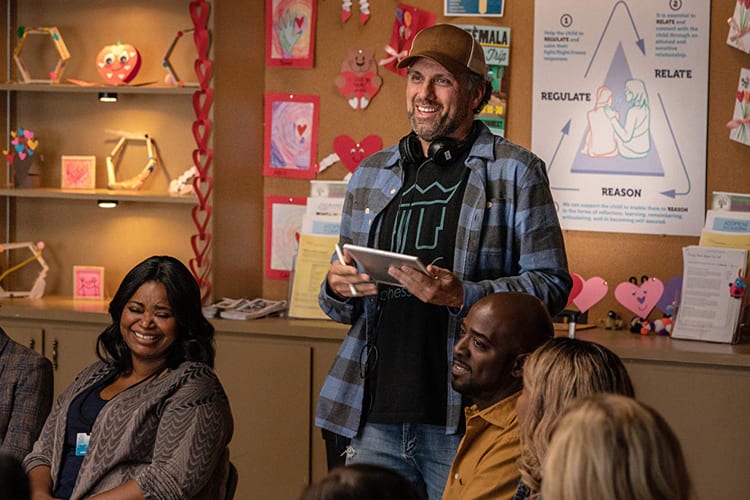A couple weeks ago, I joined a few other Arizona film critics to interview Sean Anders and John Morris, the director and writers of the upcoming movie “Instant Family.” The movie follows married couple Pete and Ellie, played by Mark Wahlberg and Rose Byrne, as they become parents overnight by fostering three kids. Sean Anders, who used to live in Arizona, based the movie on his own experiences as an adoptive father. What follows is an abridged version of our conversation.
Ryan Bordow: As you’ve said, this movie is a lot more personal than your previous projects. How did your creative process differ when you were taking stories from your own life?
Sean Anders: Uh… [Looks to co-screenwriter] You want to take some of that?
John Morris: We spent like, two years writing it? So, he’d adopted the children and he would tell me—this is before we even thought we’d make it into a movie—he would tell me stories about just everyday things that would happen to the kids, and how new it was, and the process. And then, when we sat down to write it, I kind of remembered “oh yeah, you told me about this thing and what that meant, and you told me the thing about the woman who stood up and said she wanted an African-American boy, and I thought that was funny,” and we rehashed all these things that had stuck with me and they wound up in the script.
SA: Yeah. And there was a long research process as well, because we were meeting with social workers and other adoptive families—because the movie is a fictional tale inspired by my own story, but also inspired by the stories of a lot of other adoptive families that we met along the way or we met during our research process. So there was a lot of that. So it was kind of the same process as “Hot Tub Time Machine”, just really personal and well researched.
[Laughs]
RB: Who hasn’t been there?
SA: You know, I really wanted them to release “Hot Tub Time Machine” as ‘based on the incredible true story’, but they wouldn’t do it.
Jeff Mitchell: Oh, that’s great. So, I love how this movie is based on your story. Now, according to the movie, there’s 500,000 kids in foster care today. How can we do better in making these situations more permanent? Is it a matter of just supply and demand, getting more parents interested in adopting? Do you hope that this movie helps in doing that?
SA: Um… yeah, I mean, absolutely. There are a half million kids in foster care right now and out of that half million, give or take about a hundred thousand kids don’t really have much hope of family reunification: they’re going to wind up aging out of the system, and those kids are kids like any other kids. They need love, they need families; they have love to give. And that’s really what I’m hoping people are going to come away from the movie—you know, with a better depiction of who these kids are. Because there have been great movies made about foster care, but they tend to kind of reinforce these ideas that people have, these negative ideas about the kids in the system. So I’m hoping that by shedding a little more positive light on it—and by the way, it’s honest positivity—they’ll get a more complete picture about that.
RB: Something that the movie intermittently addresses is the white savior complex—the white central characters are told that they shouldn’t worry about how others perceive them fostering kids of color. What were you trying to say?
SA: Not say anything. In my personal story, that came up, of where when you get involved in it, some people come into the system specifically wanting a certain kind of kid. There’s nothing healthy about that. Because first of all, whatever child they get, whatever they have in mind is going to be different anyway. Just like when you have your own kids, you might want a kid that’s an athlete, but he’s probably going to be a bookworm if that’s what you had in mind. In my case, we were just kind of open to wherever the need was, and we got a call from our social workers one day saying, “there’s three kids that we’d love you to meet,” and they turned out to be Latin. But it would be disingenuous to say that you don’t have those thoughts of, “how is this going to look? How are people going to perceive this from the outside?” So that’s a very real element of the journey of all of this, so I wanted to touch on it in the movie as well.
John Morris: When it came down to it, we just decided to go with what’s real.
SA: Yeah.
JM: And this was his situation, so.
SA: Yeah.




